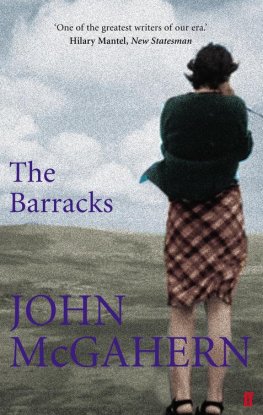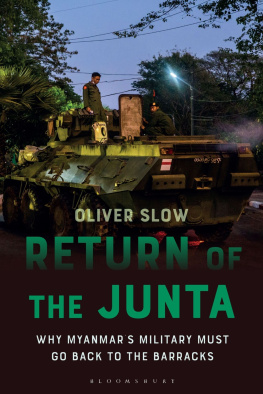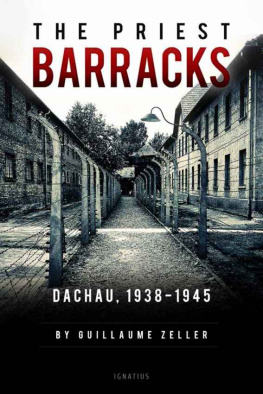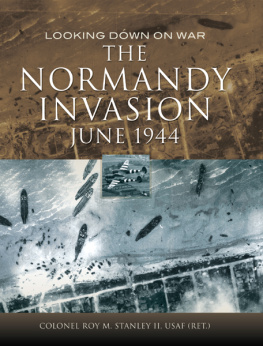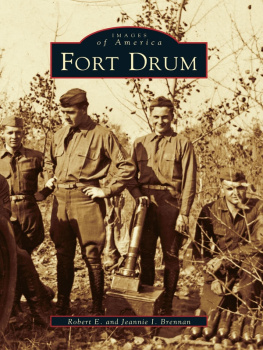STANLEY BARRACKS
STANLEY BARRACKS
Torontos Military Legacy
ALDONA SENDZIKAS
FOREWORD BY DESMOND MORTON
Copyright Aldona Sendzikas, 2011
All rights reserved. No part of this publication may be reproduced, stored in a retrieval system, or transmitted in any form or by any means, electronic, mechanical, photocopying, recording, or otherwise (except for brief passages for purposes of review) without the prior permission of Dundurn Press. Permission to photocopy should be requested from Access Copyright.
Editor: Jane Gibson
Copy-Editor: Shannon Whibbs
Design: Jennifer Scott
Printer: Marquis
Library and Archives Canada Cataloguing in Publication
Sendzikas, Aldona
Stanley Barracks : Torontos military legacy / by Aldona Sendzikas.
Includes bibliographical references and index.
Issued also in electronic format.
ISBN 978-1-55488-788-0
1. Stanley Barracks (Toronto, Ont.)--History. 2. Toronto (Ont.)--History, Military. 3. Canada. Canadian Army--Barracks and quarters--History--19th century. 4. Canada. Canadian Army--Barracks and quarters--History-- 20th century. 5. Great Britain. Army--Barracks and quarters--History--19th century. 6. Civil-military relations-- Ontario--Toronto--History. 7. Historic sites--Ontario--Toronto. I. Title.
FC3097.8.S73S46 2011 971.3541 C2010-902702-7
1 2 3 4 5 15 14 13 12 11
We acknowledge the support of the Canada Council for the Arts and the Ontario Arts Council for our publishing program. We also acknowledge the financial support of the Government of Canada through the Canada Book Fund and Livres Canada Books, and the Government of Ontario through the Ontario Book Publishers Tax Credit program, and the Ontario Media Development Corporation.
Care has been taken to trace the ownership of copyright material used in this book. The author and the publisher welcome any information enabling them to rectify any references or credits in subsequent editions.
J. Kirk Howard, President
Printed and bound in Canada.
www.dundurn.com
Published by Natural Heritage Books
A Member of The Dundurn Group
Dundurn Press
3 Church Street, Suite 500
Toronto, Ontario, Canada
M5E 1M2
Gazelle Book Services Limited
White Cross Mills
High Town, Lancaster, England
LA1 4XS
Dundurn Press
2250 Military Road
Tonawanda, NY
U.S.A. 14150
FOREWORD
School for War: Stanley Barracks and Torontos Exhibition Grounds
Toronto was once a very military town. Its high-school students, male and female, were drilled and paraded for an annual inspection under the beaming approval of Torontos inspector of schools, James L. Hughes. Its two oldest militia regiments, the 2nd Queens Own Rifles and the 10th Royal Grenadiers, paraded proudly on ceremonial and celebratory occasions, as befitted two of the most respected and efficient units in Canada. When it was Torontos turn to boast of its own kilted regiment, the 48th Highlanders sprang to life at full strength and fully accouterd within weeks of authorization. Working people and the wealthy worked together to give the city the best military institutions they could muster as proof of their commitment to the British imperialism that held sway in Canadas Queen City.
Military zeal may have been a little easier in Toronto because, hidden away in the citys vast Exhibition grounds, was Stanley Barracks, home to some of the strongest units of Canadas tiny professional army. At the Barracks, militia volunteers could see for themselves how professional soldiers in C Company of the Infantry School Corps (now the Royal Canadian Regiment) drilled, handled their weapons, and submitted to the uncompromising discipline which, to this day, distinguishes real soldiers from the overconfident amateurs. Those who aspired to Torontos Governor Generals Body Guard could model themselves on the trim, spotlessly turned-out troopers of the Cavalry School Corps, now the Royal Canadian Dragoons. The unofficial motto of the Royal Canadian Regiment was and is, Never pass a fault. It was born on this parade square.
Other would-be Canadian soldiers had to judge their appearance in their own mirrors or from the admiring comments of friends or family; Toronto militiamen, afflicted with forgetfulness or a fancy for unauthorized ornament, ran the risk of a harsh and humiliating bark from a sergeant from The Barracks. Remember that a soldier on constant alert is more likely to survive a hostile battlefield and to contribute to any victory.
The surviving remnant of Stanley Barracks, described by Dr. Sendzikas, was only the centrepiece of a vast arena that created soldiers for Canada in the First World War and airmen, primarily, for the Second. The barns and halls of the Canadian National Exhibition grounds became makeshift barracks in both world wars and the training schools for men and women who formed the core of Torontos contribution to the Allied cause. Stanley Barracks and the older Exhibition buildings that hide it survive today as functioning memorials to those Torontonians who offered their lives to their country after 1914 and again in 1939, and who often paid with their lives for Allied victory.
Times have changed. It now takes more than a drill square and a rifle range to train an effective soldier. It now requires open terrain and an even tougher physical regimen to prepare for war in an electronic age. Cities too have changed, and the limited space they could allot for soldiering within their own perimeter is needed now for a citys own business. Stanley Barracks and its neighbours remind us of the men and women who met there, sacrificing creature comforts to prepare themselves for their countrys battles. A former student, Aldona Sendzikas has worked hard to help us all understand our city and its heritage a little better. I share and celebrate the results of her labour.
Desmond Morton, C.D., O.C., F.R.S.C.
Professor of History Emeritus
University of Toronto
PREFACE
In the years 1840 and 1841, on the shore of Lake Ontario and on a plot of land that is now part of downtown Toronto, the Royal Engineers of the British Army constructed a massive stone fort consisting of six main buildings around a parade square. Designed to house three hundred men, this new fort was built to replace Torontos original military garrison, Fort York, located approximately one kilometre to the east. Fort York, situated strategically at the mouth of Toronto Harbour, had served since 1793 as Torontos primary defence, but by the 1830s was falling into disrepair.


